| Article ID | Journal | Published Year | Pages | File Type |
|---|---|---|---|---|
| 2012354 | Pharmacological Reports | 2009 | 9 Pages |
Abstract
The present study investigated the potential role of the extracellular signal-regulated kinase (ERK) pathway in the alternation of polysialylated neural cell adhesion molecule (PSA-NCAM) expression and proliferation rates in the dentate gyrus (DG) evoked by activation of the CB1 receptor. When given at a dose of 0.1 mg/kg, the CB1 receptor agonist, 3-(1,1-dimethylheptyl)-11-hydroxy-Î8-tetrahydrocannabinol (HU-210), increased the levels of the phosphorylated forms of ERK (pERK1 and pERK2) in the hippocampus when measured 30 min after injection. This HU-210-induced effect was inhibited by α-(amino[(4-aminophenyl)thio]methylene}-2-(trifluoromethyl) benzeneacetonitrile (SL327, 30 mg/kg) - an inhibitor of mitogen-activated protein kinase kinase (MEK1/2), the upstream kinase of ERK - given 1 h before HU-210 administration. Additionally, SL327 alone significantly attenuated the basal level of both pERK1 and pERK2. HU-210 (0.1 mg/kg) decreased the number of PSA-NCAM-immunoreactive (IR) cells but did not affect the rate of proliferation, which was analyzed as the number of Ki-67-IR cells measured in the DG 2 days after HU-210 administration. The data indicated that SL327 (30 mg/kg) alone decreased the number of PSA-NCAM-IR cells 2 days after treatment. Joint administration of SL327 and HU-210 decreased the number of PSA-NCAM cells more robustly than did the administration of either alone. In addition, SL327 did not decrease the number of Ki-67-IR cells, while pretreatment with SL32 7 1 h before HU-210 administration did. These results suggest that stimulation of the ERK cascade caused by CB1 receptor activation is not involved in hippocampal plasticity governed by PSA-NCAM expression.
Related Topics
Life Sciences
Biochemistry, Genetics and Molecular Biology
Biochemistry
Authors
Marzena MaÄkowiak, Dorota Dudys, Krzysztof WÄdzony,
